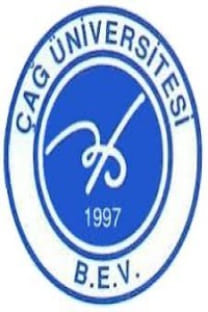Karar Sonrası Tüketicinin Bilgi Seçiciliği
Bu çalışma “Bilişsel Çelişki” kuramından tüketici davranışları irdelemek bağlamında üretilmiş bazı hipotezleri test etmek amacıyla düzenlenmiştir. Bunlar; (1) Bilişsel çelişki yaşayan tüketici, toplam bilişsel çelişkiyi azaltmak amacıyla yeni bilgi arayışı içerisine girer ve bilişsel çelişkiyi arttıracak yeni bilgiden kendisini korur; (2) tüketici bilişsel çelişkisini azaltmayı başaramazsa ve sürekli olarak bilişsel çelişkisini arttıracak bilgi bombardımanı ile karşı karşıya kalırsa, kararını değiştirme noktasına varabilir. Ön-test sonuçları dikkate alındığında ilk hipotezin test edilmesinin daha uygun olacağı kararına varılmıştır.Araştırmada 56 denek yer almıştır. Deneklere bir pazar araştırmasına katılacakları söylenmiştir. Her bir deneğe sekiz farklı ürünle ilgili bir bilgi kartı verilmiştir. Her bir durumla ilgili olarak önkarar aşinalığını arzu edilir bir noktaya getirebilmek maksadıyla çalışmanın bu aşamasında zaman manipüle edilmiştir. Bu ilk “bilgi” basamağından sonra, “Bilişsel Çelişkiyi Azaltma” grubunda olan deneklerden verilen “bilgi” yi hatırlamaları istenmiş, buna mukabil “Bilişsel Çelişkiyi Muhafaza” grubundaki deneklerden ise böyle bir şey istenmemiştir. Sonuçlar hipotezi desteklemektedir
Anahtar Kelimeler:
Bilgi seçiciliği, pişmanlık, tüketici kararı, bilişsel çelişki
The Selectivity of Information After a Consumer Decision
An experiment was designed to test the following hypotheses derived from dissonance theory: (1) A person experiencing dissonance will actively seek new information that would reduce the total dissonance and will avoid new information that might increase the existing dissonance; (2) if a person is unable to reduce dissonance and he is continually confronted with dissonance-increasing information, he will reach a point where he will change or revoke his decision. On the basis of pretest result, it was decided to consider only the first hypothesis in the final experiment. In general, the procedure was as follows: Each of the (N=56) Ss was told he was participating in a market research. Each S was given an information card on each of eight products. Time was manipulated in this step to establish the desired degree of pre-decision familiarity in each condition. After this first information step, the Ss in the Dissonance Reduction group were asked to recall the information, whereas the Ss in the Dissonance Maintenance condition were not. The results generally support the hypopthesis
___
- Adams J.S. (1961) “Reduction of Cognitive Dissonance by Seeking Consonant Information.”J. Abnorm. Soc. Psychol, 62, pp. 55.
- Anderson, L. K.(1963)“The Effects of Alternatives on the Buying Decisions on the Consumer.”Unpublished Master Thesis, Bennett E. B. (1955) “Discussion, Decision, Commitment, and Consensus in ‘Group Decision’.”Human Relations, 8, pp. 44
- Blake M. M, Terry, D. J., Hogg, M. A., Manstead, A. S. R., Spears, R., Doosje, B.(2003) “I’m a Hypocrite, but So Is Everyone Else: Group Support and the Reduction of Cognitive Dissonance.” Group Dynamics: Theory, Research, and Practice, Vol. 7, No. 3, 214–224
- Boyd H. W., Westfall, R. (1956) Marketing Research, Homewood, Ill.:Irwin
- Brehm J. W. (1955) “Post-decision Changes in the Desirability of Alternatives.”Unpublished Doctoral Dissertation, Uni. of Minnesota.
- Brehm J. W., Cohen A. R. (1962) Explorations in Cognitive Dissonance. New York: Wiley.
- Brehm J. W., Cohen A. R., Sears D. (1960) “Persistence of Post-Choice Dissonance Reduction Effects.”Unpublished Study.
- Canon L. (1964) “Self-Confidence and Selective Exposure to Information.” In L. Festinger Eds.,Conflict, Decision, and Dissonance. Stanford: Stanford University Press.
- Caruana, R. (2007) “A sociological perspective of consumption morality”Journal of Consumer Behaviour 6: 287-304, Published online in Wiley InterScience (www.interscience.wiley.com) DOI: 10.1002/cb.222
- Cohen A. R., Brehm J. W., Latane B. (1959) “Choice of Strategy and Voluntary Exposure to Information Under Public and Private Conditions.”Journal of Personality, 27, pp 12
- Davidson J. R. (1964) “Cognitive Familiarity and Dissonance Reduction.” In L. Festinger Eds.,Conflict, Decision, and Dissonance. Stanford: Stanford University Press.
- Dieter, F. (1982) “Different Levels of Cognitive Dissonance, Information Seeking, and Information Avoidance.” Journal of Personality and Social Psychology, Vol. 43, No. 6, 1175-1183.
- Ehrlich D., Guttman L., Schonbach P., Mills J. (1957) “Post-Decision Exposure to Relevant Information.”Journal of Abnormal Social Psychology, 54, pp 54.
- Engel J. F. (1963) “Are Automobile Purchases Dissonant Consumers?”J. Marketing, 27, pp. 36
- Festinger L. (1957) A Theory of Cognitive Dissonance, Stanford: Stanford University Press.
- Festinger L. (1964) Conflict, Decision, and Dissonance. Stanford: Stanford University Press.
- Festinger L., Walster E. (1964) “Post-Decision Regret and Decision Reversal.” In L. Festinger Eds.,Conflict, Decision, and Dissonance. Stanford: Stanford University Press.
- Fram, E.,H., (1965) “Application of Marketing Concept to Retailing.” Journal of Retailing, Summer 65, Vol. 41, Issue 2, p. 8-19
- Jecker J. (1964) “Selective Exposure to New Information.” In L. Festinger Eds.,Conflict, Decision, and Dissonance. Stanford: Stanford Uni. Press.
- Jochen R., Connolly T. (2010) “The effects of action, normality, and decision carefulness on anticipated regret: Evidence for a broad mediating role of decision justifiability” Cognition & Emotion. Dec, Vol. 24 Issue 8, p1405-1420. 16p. DOI: 10.1080/02699930903512168.
- Kneer, J., Glock, S., Rieger, D. (2012) “Fast and Not Furious?” Social Psychology, Vol 43(2), 2012. pp. 81-91.
- Lewin K. (1952) “Group Decision and Social Change.” In G. Swanson, T. Newcomb, and E. Hartley Eds.,Readings in Social Psychology. New York: Henry Holt
- Lewin K. (1938) The Coceptual Representation and the Measurement of Psychological Forces. Durham, N. C.: Duke University Press.
- Martin A. H. (1922) “An Experimental Study of Factors and Types of Voluntary Choice, No. 51.
- Martinez L. M. F.; Zeelenberg, M.; Rijsman, J. B. (2011) “Behavioural consequences of regret and disappointment in social bargaining games” Cognition & Emotion. Feb, Vol. 25 Issue 2, p351-359. 9p.
- Mills J. Aronson E. And Robinson H. (1959) “Selectivity in Exposure to Information.”J. Abnorm. Soc. Psychol., 59, pp. 21
- Rosen S. (1961) “Post-decision Affinity for Incompatible Information.”J. Abnorm. Soc. Psychol., 63, pp. 15
- Rosenzweig, E., Gilovich, T. (2012) “Buyer’s Remorse or Missed Opportunity? Differential Regrets for Material and Experiential Purchases.” Journal of Personality and Social Psychology, Vol 102(2), Feb, pp. 215-223.
- Walster E. (1964) “The Temporal Sequence of Post-Decision Processes.” In L. Festinger Eds.,Conflict, Decision, and Dissonance. Stanford: Stanford University Press.
- ISSN: 1304-8392
- Yayın Aralığı: Yılda 2 Sayı
- Başlangıç: 2004
- Yayıncı: Çağ Üniversitesi
